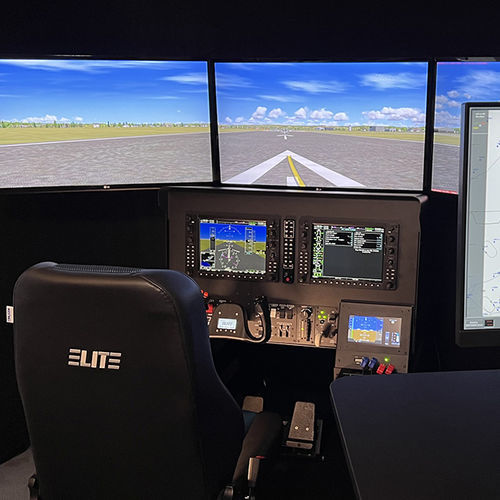
#Product Trends
Pilot Training: Steps, Simulators, and Muscle Memory
Becoming a pilot is a dream for many, but the road to becoming a pilot is a long and challenging one.
The training involves a combination of ground school and flight training, with the use of flight simulators playing an increasingly important role. In this article, we will describe the different steps of pilot training, including information on the use of flight simulators, and the importance of muscle memory and regular training.
Ground School
The first step in pilot training is ground school, where aspiring pilots learn about the theory of flight, aerodynamics, aircraft systems, aviation regulations, navigation, weather patterns, and other critical topics. Ground school is typically done in a classroom setting and includes lectures, textbooks, and exams. This phase of training is essential for pilots to have a solid understanding of the principles of flight and to be able to apply them to real-world situations.
Flight Training
After completing ground school, pilots start their flight training. This training typically begins in a small single-engine aircraft, where pilots learn the basics of handling an aircraft, takeoff, landing, and navigation. They also learn how to handle emergency situations and develop their flying skills. As pilots gain experience, they move on to more advanced flight training in larger, more complex aircraft. During flight training, pilots must also learn to communicate effectively with air traffic control and follow all aviation regulations and safety protocols.
Flight Simulators
In recent years, the use of flight simulators has become increasingly important in pilot training. Flight simulators provide a safe and controlled environment for pilots to practice their flying skills and handle emergency situations without putting themselves, passengers, or aircraft at risk. Simulators are incredibly realistic and allow pilots to experience a wide range of scenarios that they may encounter during a flight, including engine failure, adverse weather conditions, and emergency landings. Simulators can also be used to practice communication with air traffic control and other pilots.
Muscle Memory
One of the most important aspects of pilot training is developing muscle memory. Pilots need to be able to react quickly and effectively to changing situations, and muscle memory plays a critical role in this. Muscle memory is the ability of the body to perform complex movements without conscious thought. Pilots develop muscle memory through repeated practice of specific skills, such as handling the aircraft during takeoff and landing, navigating, and communicating with air traffic control. This is why regular training is essential for pilots to maintain their skills and develop their muscle memory.
In conclusion, becoming a pilot is a challenging and rewarding experience. The training involves a combination of ground school and flight training, with the use of flight simulators playing an increasingly important role. Pilots must also develop muscle memory through regular training to be able to react quickly and effectively in changing situations. If you are interested in becoming a pilot, remember that the road to success requires dedication, hard work, and a commitment to lifelong learning.
Comparison of EASA and FAA Pilot Training Regulations
While pilot training regulations vary by country, two of the most widely recognized aviation authorities are the Federal Aviation Administration (FAA) in the United States and the European Union Aviation Safety Agency (EASA) in Europe. Here are some key differences between the two:
Age requirements: The minimum age requirement for a private pilot license is 17 for both the FAA and EASA. However, EASA requires a minimum age of 18 for a commercial pilot license, while the FAA requires a minimum age of 21.
Medical requirements: Both the FAA and EASA require pilots to pass a medical examination to ensure they are physically fit to fly. However, the medical standards and procedures are different for each authority.
Flight hour requirements: The FAA requires 40 hours of flight time for a private pilot license, while EASA requires a minimum of 45 hours. For a commercial pilot license, the FAA requires 250 hours of flight time, while EASA requires a minimum of 200 hours.
Training curriculum: The FAA and EASA have different training curriculums, with the FAA focusing more on hands-on flight training and the EASA including more theoretical knowledge. Additionally, EASA requires a Multi-Crew Cooperation (MCC) course, which teaches pilots to work together in a multi-crew environment.
License recognition: EASA pilot licenses are recognized in all EU member states, while FAA licenses are recognized in countries that have a bilateral agreement with the United States.
While the regulations for pilot training vary by country, both the FAA and EASA strive to ensure that pilots meet a high level of proficiency and safety standards. Whether you are training to be a private pilot or a commercial airline pilot, it's important to carefully consider the regulations and requirements of your country's aviation authority and to seek out a reputable flight training school. With dedication and hard work, you can take to the skies and enjoy a fulfilling career as a pilot.






